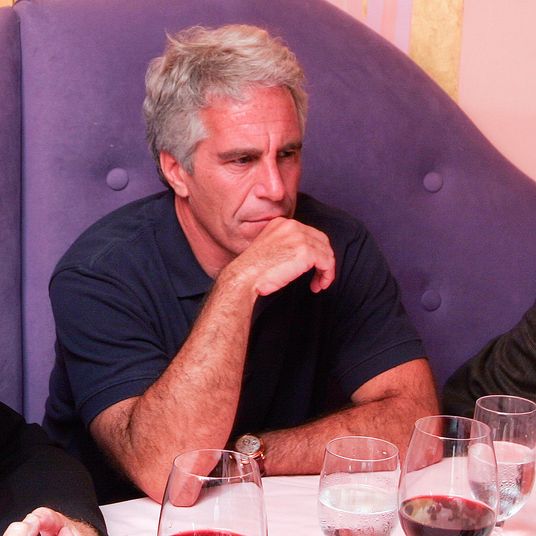
The Red Sea is one of the most economically crucial bodies of water on the planet. Not only does the route connect western consumers with goods and oil produced in Asia and the Middle East, but it’s been notoriously volatile in modern times since 1956, when Egyptian president Abdel Nasser seized the Suez Canal and crippled the British economy, an episode that became a signal event in the anti-colonialist movement. (You might have seen this dramatized on The Crown, if you weren’t already familiar.) On its western shore is Egypt and a handful of other North African countries, including Sudan and Somalia. Saudi Arabia and Yemen are to the east. At its northernmost point is the Suez, the 672-foot-wide trade route where a very big boat, the Ever Given, got stuck for about a week back in 2021.
Right now, a global shipping crisis is unfolding at the sea’s southern strait, the Bab-el-Mandeb, which translates to the “Gate of Tears.” Houthis in Yemen have been using drones and missiles to attack container ships as they pass through the strait, which has caused nearly a dozen of the largest shipping and energy companies — including BP, Maersk, and MSC — to reroute around Africa. The U.S. Navy, along with other countries, has since sent more ships to protect the vessels, but not enough to escort every one through the precarious strait. This boondoggle has already led to a spike in oil and gas prices, and has scrambled the intricately balanced web of global trade.
The attacks were triggered by the Israel-Palestine war
The Houthis in Yemen is a military organization backed by the Iranian government that has been at war with the Saudi-backed government for control over the country since a 2011 uprising. This war has been one of the biggest global humanitarian crises of this century, according to the United Nations, with nearly 22 million people in need of aid. In 2021, Donald Trump designated it a terrorist organization, but Joe Biden reversed that decision soon after he became president. It controls much of the western part of the country, which borders the Red Sea.
The Houthis started attacking container ships that passed through the Bab-el-Mandeb, as part of a regionwide escalation of Israel’s war on Palestine. In November, they seized the Galaxy Leader in a brazen helicopter attack that they apparently documented in body-cam footage. The ship was linked with Israeli billionaire Rami Ungar, and soon the Houthis were attacking other ships linked to Israel. They also vowed to attack any ship headed to Israel, regardless of nationality. “If Gaza does not receive the food and medicine it needs, all ships in the Red Sea bound for Israeli ports, regardless of their nationality, will become a target for our armed forces,” a spokesman for the Houthis said in a statement, according to Reuters.
But figuring out where ships are going, or who owns them, isn’t always the easiest thing. Often, container ships fly so-called flags of convenience in order to avoid having to pay taxes or higher wages to their crew, and also disguise the true country of origin for the vessel. Perhaps because of that, the Houthis have been attacking more and more ships, including one Norwegian ship on Monday. “The Houthis are attacking literally any ship,” said Sal Mercogliano, a maritime history professor at Campbell University.
The global supply chain is already getting scrambled
On Monday, oil and gas giant BP announced that it would no longer send its ships through the Red Sea. This followed similar announcements from Maersk and MSC, two of the largest shipping companies in the world. Instead, these companies will take the long way to Europe and North America by going around the entire continent of Africa.
This could mean that shipping could get delayed for 20 days or longer, depending on the destination, said Ben Nolan, an analyst at investment bank Stifel. “A one-way voyage is somewhere between 10 to 20 extra days,” he said. For ships that have to return to their ports of origin, though, it can be double the amount of time. The longer delays will probably be for ships that are destined for Mediterranean ports, Mercogliano said, while ships bound for the U.S. could see delays only as long as three or four days.
Still, the supply-chain problems are likely to compound from there. Once ships arrive at their ports, there is likely to be a traffic jam. “You can’t just divert shipping containers,” Mercogliano said. Since large ships carry as many as 15,000 containers, which have to be unloaded in an intricate order, clearing each ship can take time. “It’s a big Jenga problem,” he said.
The U.S. is intervening, and commercial giants want even more protection
The Houthi attacks are successful in part because of how technically sophisticated they are — we’re talking drone attacks and missiles. While the crew of the Galaxy Leader is still seized, no crew members are known to be killed or injured so far. (At least one other ship has recently been seized in Somali territory, but it’s not clear who is responsible.) So far, the U.S. Navy has responded by shooting down Houthi drones, but the attacks have continued.
Part of the problem goes back to those flags of convenience. Mercogliano likened the situation to the so-called Tanker Wars in the 1980s, when Iran and Iraq attacked more than 400 oil vessels in the region. Still, the U.S. didn’t intervene militarily until Kuwaiti ships flew the U.S. flag — which meant paying U.S. taxes.
Now, Mercogliano said, the shipping companies want to get U.S. Navy protection while still being allowed to fly another country’s flag. “In a way, the shipping companies are driving foreign policy,” he said. While the U.S. has directed the destroyer USS Lebanon into the Red Sea, it’s still not providing that level of protection.
There are few good alternate routes
Despite the vastness of the world’s oceans, it is not so easy to just chart a new route to whatever your destination may be. The problems with Bab-el-Mandeb come at a time when there are already issues with another notorious choke point in global trade: the Panama Canal. That trade route has been backed up because of low rainfall in the region, which means that larger ships can’t go through.
This means that one of the biggest losers in this crisis isn’t going to be the U.S. or European countries, but Asia. Since the U.S. is a net producer of energy, that means that oil and natural gas produced here are exported to countries like China and South Korea. In normal times, those ships would pass through the Panama Canal, Nolan said. The backup plan would be to send them through the Red Sea. Since both of those routes are now cut off, that means these container ships will have to go one of the longest routes in order to deliver petroleum, crude oil, or natural gas. “Some of those cargos had already been going the long way around, and now they have to go the extra-long way around,” Nolan said.
If it goes on for a while, the crisis could push prices up
Since BP announced that it was diverting its trade routes, oil and gas prices have risen about 2.8 percent. At this point, it’s not clear whether this will be a long-term problem or merely a blip from a jittery oil market already on edge from a Middle Eastern war. But this probably won’t be the only reason that prices on shelves increase.
Shipping companies have already started to demand more money in the form of war-risk insurance, said Mercogliano. Normally, these costs amount to 0.02 percent of the value of a vessel. That’s risen tenfold, he said. Should this become a protracted conflict, that could rise to as high as 5 percent, the same level as during the 1980s Tanker Wars, which would mean millions of dollars in extra premiums. (Mercogliano thought that sounded alarmist.)
But is this going to cause a late spike in prices for last-minute holiday shopping or traveling? Probably not. “Unless this is really protracted, this is probably not anything the consumer would really notice,” Nolan said. “It’s a few extra pennies in gasoline prices, maybe there are some goods that are not on the shelf for a week. But not anything life-changing.”





























